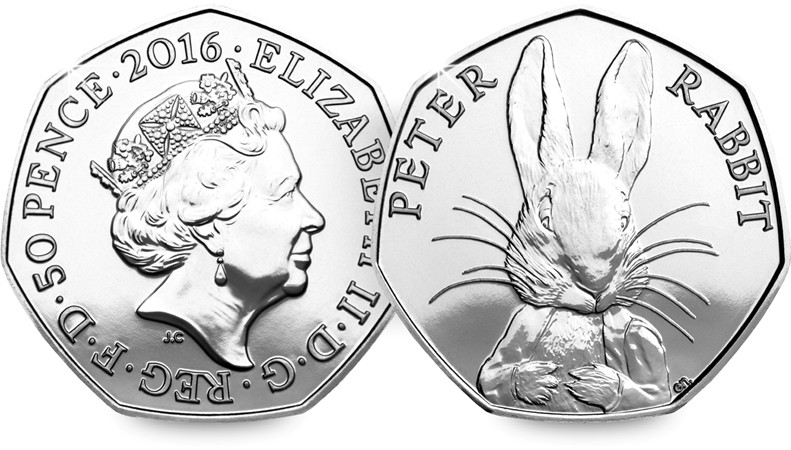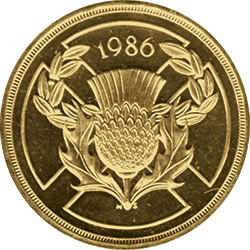Posts by Ian
How Peter Rabbit changed British Coin Collecting
 On 29 February 2016 UK coin collecting was changed forever.
On 29 February 2016 UK coin collecting was changed forever.
It wasn’t changed by a new currency, a new coin specification, or even a new denomination.
It was changed by a small rabbit. A rabbit called “Peter”.

Change Checkers chose the Beatrix Potter 50p Coins as their coin story of the year.
Of course, Peter is no ordinary rabbit. He’s the naughty rabbit at the centre of Beatrix Potter’s beloved children’s stories.
And so it was no surprise when Change Checkers voted the UK’s new Beatrix Potter coins as the coin collecting story of the year with almost twice as many votes as the next rival.
But why has Peter Rabbit and Friends piqued a nation’s collecting fervour when dozens of other coins have barely passed mention?
-
An established tradition of collecting and gifting
Go to your kitchen cupboard or sideboard. Pull out the things you use every day and rummage around in the back. I’ll bet you 50p (although maybe not a Peter Rabbit one) that’ll you’ll pull out a Peter Rabbit cup or plate – perhaps Wedgwood or Royal Doulton. And it’s equally likely to be from your childhood as your children’s (if you have them).
Walk into a baby’s nursery and the same applies. The Tales of Peter Rabbit and Friends adorn the shelves. Not so much as literary treat at bedtime but much more an ornament designed to reflect a wholesome and traditional childhood.
Whether, books, plates, figurines or plush, nearly all of us have grown up with Peter Rabbit collectables, and still today, when seeking a new baby, first birthday or Christening gift, we turn to the works of Beatrix Potter.
-
Incredible news coverage
It’s unusual to wake up to see a new British coin hitting the headlines of the morning’s newspapers and being the conversation point on the breakfast show sofas. But Peter Rabbit did just that.

The Silver 50p crashed the Royal Mint’s website
However, it was not the base metal coin that would enter circulation that was causing all the excitement. Instead it was the Limited Edition Silver Proof Coin. And it wasn’t just Peter capturing the nation’s imagination, it was the fact that he had been finished in colour – the first time the main element of a British coin has ever been coloured.
That was enough to get the story out there. EVERYWHERE. By mid-morning The Royal Mint’s website had crashed under the sheer weight of the public’s interest. The Mint suddenly had to limit numbers and in little more than a few hours all 15,000 coins were completely sold out.
Suddenly the sell out consolidated demand and interest for the base metal Peter Rabbit coin, as well as the three further issues of 2015 – Squirrel Nutkin, Mrs Tiggy-Winkle and Jemima Puddle-Duck.
Excitement increased even more, when The Royal Mint announced that they would make an early release of the circulation coins in just 5 locations with links to Beatrix Potter. But how would it last? Would the Peter Rabbit 50p become a valuable modern classic?
-
Add eBay Fuel to the media fire
Of course, a few years ago the story may have come and gone as quickly as Peter Rabbit scurrying out of Mr McGregor’s garden. But not in 2016.
As stories of shortages grew, collectors turned to eBay to sell not only the scarce Silver 50p but also the Royal Mint base metal packs – all at a massive premium. Online auctions in May were showing circulation coins achieving sale prices north of £30.00, whilst crazy listings had “buy-it-now” prices closer to £100.
And so the collecting frenzy continued to spiral, with journalists returning to the story that had first whet their appetites in February as a new coin, bringing it back to life as the new “rare coin” to enter circulation.
So what’s the truth behind the Beatrix Potter 50p Coin?
Firstly, it’s fair to say that the Silver Coin is very scarce. All 15,000 were sold to individual collectors and getting hold of one now is extremely difficult. One established London coin dealer is currently offering them for a minimum of £580 in original Royal Mint packaging.
As for the base metal version of the coin, it is also destined to be one of the most wanted circulating coins of all time. It has, after all, been the most requested swap on Change Checker for the last 6 months – breaking all previous records.
However, buyer beware. At the moment you can still by mint condition brilliant uncirculated Beatrix Potter 50p coins in official Royal Mint Presentation Packs for £10 or Change Checker Certified Brilliant Uncirculated Coins for just £3.99. And, of course, you still have the chance of finding one in your change for just 50p.
So for now, avoid being blinded by the hype – the most you need to pay today is just £3.99.
But there is some magic here. The combination of a deep collectable heritage, a growing national fascination in coins, and a spiralling of demand has made Peter Rabbit (along with Squirrel Nutkin, Mrs Tiggy-Winkle and Jemima Puddle-Duck) a true collecting sensation.
And I can’t believe that’s about to die away. For me it’s a certainty that the 2016 Peter Rabbit 50p coins will quickly disappear from circulation, destined to become one of the rarest and most sought-after 50p coins ever issued.
At the same time, it’s created many thousands more pocket change collectors, not just fascinated by Peter Rabbit and Friends but also by the 100 plus other designs that help define our nation.
Well done Royal Mint – and, of course, a small nod to Beatrix Potter too.
Still Available – the complete range of Beatrix Potter 50p Coins from just £3.99
How the Commonwealth Games started £2 Coin Collecting
In 2014 the Royal Mint struck a new circulating coin for the Glasgow Commonwealth Games. But I can still remember back to the summer of 1986…
My father worked for a bank. He came home one evening with half a dozen coins in his hands. “I bet you don’t know what these are…”, he said. “They’re the new £2 coin. They’ve been released to celebrate the Commonwealth Games.”
A new denomination for the UK
This was something genuinely new. The only “commemorative” coin in circulation was that slightly odd “hands” 50 pence that no-one really knew much about and there had only been two commemorative crowns issued in the last 20 years – both for Royal events.
This was a brand new denomination and it commemorated a proper non-royal national event that really engaged the nation. Although the 1986 Commonwealth Game coin was largely kept by collectors and never really entered mass circulation, it marked a significant change in the UK’s commemorative coin issuing strategy.
Six more single-coloured commemorative £2 coins were struck over the next 10 years before the introduction of the fully circulating £2 denomination, which has now seen 50 different designs issued.
Of course, amongst those 50 coins are four coins from 2002 – again issued to celebrate the Commonwealth Games – this time held in Manchester. At first glance, you might struggle to spot the difference between them. They all feature the same running athlete trailing a banner behind. But each has a different cameo, representing each of the four constituent parts of the United Kingdom. Find out how to tell these coins apart here >>
Officially the UK’s rarest £2 coin
They are some of the scarcest £2 coins now in circulation, with even the largest mintage (Scotland) set at just 771,750 – just 17% of the first ever commemorative bimetallic £2 coin, which was issued for the Rugby World Cup in 1999.

The 2002 Commonwealth Games £2 coins are some of the rarest ever issued. Their mintage figures are shown below each design.
But the coin you really need to be looking out for is the Northern Ireland £2. Just 485,000 coins were ever struck making it officially the UK’s rarest £2 coin.
75% disappear from circulation
Of course, the 2014 Commonwealth Games coin is a 50p, rather than the previous £2 coins. But with the Royal Mint estimating that as many as 75% of all Olympic 50ps being kept by collectors, it’s definitely worth scouring your change for.
Own the Commonwealth Games coin that started £2 collecting
This coin is no longer in circulation, but we’re giving you the chance to own the UK 1986 Commonwealth Games £2 for your collection.
£516,000 Gold Sovereign breaks auction record for a Royal Mint coin
It’s every Change Checker’s dream to find a significant coin which is worth a fortune. And they don’t come any more significant than the Edward VIII Sovereign which has just smashed an auction record and netted £516,000.
The incredibly rare 1937 dated gold ‘proof’ coin is the only single example available to collectors anywhere in the world. It was struck ahead of the King’s Coronation, however following the scandal which predicated Edward’s abdication from the throne in 1936, the coins became redundant and cemented their place in collecting folklore.
His left-facing portrait; the same as his predecessor George V, also represents a unique deviation from a tradition which started in the 17th century under Charles II who wished to be facing the opposite way to Oliver Cromwell.
“In the world of coins, it’s the coin’s story that makes it important and this coin has the most fantastic story” said winning bidder Mr Jordan Lott of Regal Rare Coins in Chester.
After a tense battle in the Baldwin’s auction room and some fierce bidding, the coin eventually reached a winning bid of £430,000 and with fees included this took the total price to £516,000.
It was money which Mr Lott was happy to pay; “I was the first to bid and I was determined to be the last. I would have paid another £50,000 to make sure I got it.”
The price is the highest ever recorded for a sovereign coin struck by the Royal Mint in the UK and possibly the best example of the numismatic significance of British coins in the collecting world.






